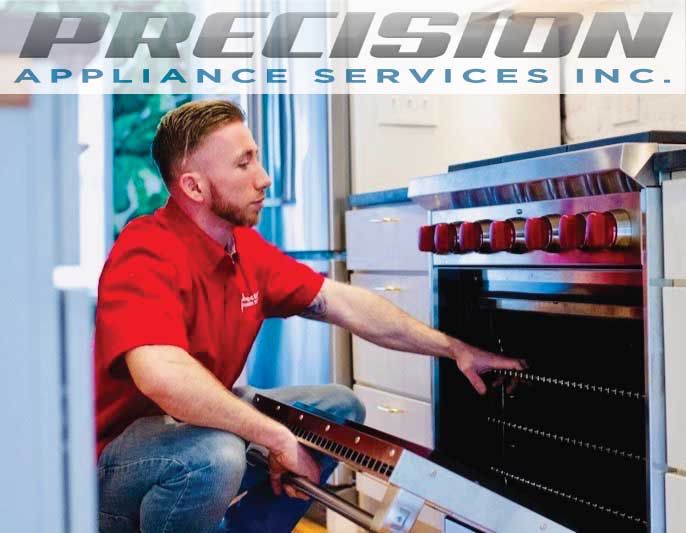The Ultimate Guide to Understanding Device Repair Work at Home
When your refrigerator stops cooling or your oven declines to warmth, it can really feel frustrating. Comprehending appliance repair work in the house can save you time and money. You'll discover to acknowledge signs, use crucial devices, and adhere to an organized troubleshooting process. However before you start, there are crucial safety and security preventative measures you need to take into account. What are one of the most typical issues, and exactly how can you fix them? Let's check out the fundamentals.
Usual Appliance Troubles and Their Signs and symptoms
When your home appliances begin acting up, it's important to acknowledge the indicators at an early stage. Overlooking them can bring about larger issues and expensive repairs. For example, if your refrigerator isn't cooling properly, you may discover cozy spots or condensation forming. This can show a stopping working compressor or a blocked vent.Your dish washer might reveal troubles through dirty meals or unusual noises throughout cycles. If you hear grinding or clanking, it's time to investigate.A cleaning equipment that will not rotate or drain can leave you with soggy laundry, suggesting a blocked drain or a malfunctioning pump.Lastly, if your stove's temperature level seems off or it takes forever to pre-heat, you may be handling a malfunctioning thermostat. By remaining alert to these signs and symptoms, you can resolve issues prior to they rise into major repair services.
Necessary Tools for Home Appliance Fixing
When you're dealing with home appliance repair services in the house, having the right tools is vital. Fundamental hand tools like screwdrivers and pliers will certainly help you dismantle and take care of different home appliances, while electric screening devices guarantee you're functioning securely with circuitry. Allow's review what you need to begin on your repair service journey.
Fundamental Hand Tools
Having the right tools is essential for effective device repair service in the house. Beginning with a trusted screwdriver set, including both flathead and Phillips kinds, as screws prevail in home appliance setting up. Pliers are also important; they help with gripping, turning, and reducing cords or little components. A set of needle-nose pliers can get to tight spots conveniently. You'll need an excellent flexible wrench for tightening up or loosening nuts and bolts. An utility blade is useful for cutting via product packaging or insulation. Lastly, don't neglect a strong workbench or surface area to safely arrange your devices and parts. With these fundamental hand devices, you'll be well-prepared to tackle most device fixings that come your way.
Electrical Testing Tools
Along with fundamental hand devices, electric testing tools play an essential role in device repair work. These devices aid you identify electrical problems and guarantee devices operate safely. A multimeter is important; it measures voltage, current, and resistance, allowing you to identify problems promptly. A non-contact voltage tester is another must-have, allowing you find online wires without making straight get in touch with, enhancing your safety. Secure meters are great for measuring existing circulation in cords without disconnecting them, conserving you effort and time. In addition, circuit testers can rapidly inspect if outlets are working effectively. By using these tools, you'll simplify your troubleshooting procedure and improve your fixing skills, making device maintenance a lot much easier.
Step-by-Step Guide to Diagnosing Appliance Issues
When your device acts up, it can be irritating, but identifying the concern does not have to be overwhelming. You'll learn to determine common issues and apply effective fixing methods. Let's go through the steps to obtain your home appliance back in functioning order.
Common Device Troubles

Troubleshooting Methods Explained

Fixing Major Kitchen Appliances: A Closer Look
Have you ever wondered exactly how to tackle common issues with your kitchen area appliances? Fixing major kitchen area home appliances like refrigerators, ovens, and dish washers can be easier than you think. Begin by determining the issue-- whether it's a fridge not cooling down or a stove that will not heat. Usually, a straightforward reset or examining the power source can fix the issue.For refrigerators, tidy the condenser coils and examine the door seals. If your stove's not home heating, inspect the heating element and thermostat. Dish washers may simply need a tidy filter or a reset to get them back at work. Constantly unplug the device prior to diving into fixings to ensure your safety.Don' t forget to seek advice from the customer guidebook for specific repairing ideas connected to your design. With a little bit of patience and the right tools, you can confidently deal with device repair work and save cash at the same time!

Fixing Laundry Appliances: Tips and Techniques
When your washing devices begin acting up, it can feel frustrating, but repairing them does not need to be a problem. Beginning by checking the power supply. Verify the appliance is connected in and the electrical outlet is functioning. Next off, evaluate the door or cover button; a defective button can prevent the maker from operating.For washers, if it's not rotating, inspect for out of balance tons. Rearranging the clothes might address the problem. If your dryer isn't heating, clean the dust filter and examine the vent for blockages.Listen for unusual noises; they can show an issue. If your device is leaking, inspect the pipes for fractures or loose connections. File any kind of error codes presented on digital screens, as they can direct you in determining the concern. Speak with the user manual for certain fixing tips connected to your design.
Safety Preventative Measures to Take Throughout Fixes
Before you begin any type of appliance fixings, it's important to focus on security to stop crashes or injuries. Unplug the appliance or transform off the circuit breaker to guarantee no power reaches it while you work. Usage shielded tools to decrease the threat of electrical shock. Put on safety and security goggles and handwear covers to safeguard yourself from sharp sides or debris (Dependable Refrigeration & Appliance Repair Service Dryer repair near me).Make particular your work space is clean and well-lit, so you can see what you're doing. Maintain kids and animals away from the location to prevent diversions and potential threats. If you're managing gas home appliances, be added cautious; check for leaks prior to proceeding.Take your time, and do not hurry through fixings. If you feel unsure regarding any step, it's much better to pause and study than to think. Following these safety measures will certainly assist create a much safer atmosphere for your DIY home appliance fixing job
When to Call a Professional for Aid
How do you recognize if it's time to employ a specialist for device fixings? If you have actually tried standard troubleshooting without success, it's a clear indication. If your home appliance still won't begin or reveals unusual noises after resetting it, do not wait to look for professional help.When you observe leakages, smoke, or melting scents, focus on security and call a professional promptly. These concerns can cause even more substantial damages or present risks to your home.Also, if your device is under service warranty, speaking to an expert is usually the very best path. They can ensure that repair services won't nullify your warranty, conserving you dryer repair money in the long run.Finally, if you're not sure or unpleasant with intricate repair services, it's sensible to leave it to the professionals. Remember, taking on complex issues without the right competence can cause pricey blunders. Count on a specialist when unsure!
Regularly Asked Concerns
How Can I Stop Device Problems in the Future?
To stop home appliance issues in the future, you need to perform routine upkeep, look for damage, clean filters, and stay clear of overloading. Staying positive will help prolong their life expectancy and maintain them running efficiently.
What Are one of the most Usual Do It Yourself Appliance Repair Service Mistakes?
You could forget security precautions, skip fixing actions, or use incorrect devices when attempting do it yourself device repair work. Rushing the process or overlooking maker guidelines can bring about even more substantial issues and expensive mistakes. Keep patient and informed!
Exactly how Do I Know if a Component Demands Substitute?
You can inform if a component needs replacement by examining for uncommon noises, leakages, or irregular efficiency. If the device struggles to run correctly or shows visible damages, it's most likely time for a substitute.
Can I Use Generic Parts for Home Appliance Repairs?
Yes, you can use generic components for device repairs, but ascertain they're suitable - Fixes washers and dryers Oro valley Dependable Appliance Repair. Common components may conserve you money, however they might influence efficiency or long life, so consider your alternatives meticulously before choosing
What Guarantees Cover Device Repair Works?
Many home appliance service warranties cover repair services for making problems, but they often leave out damages from misuse. Inspect your service warranty terms meticulously, as some may require using licensed service technicians and original parts for insurance coverage to stay valid.